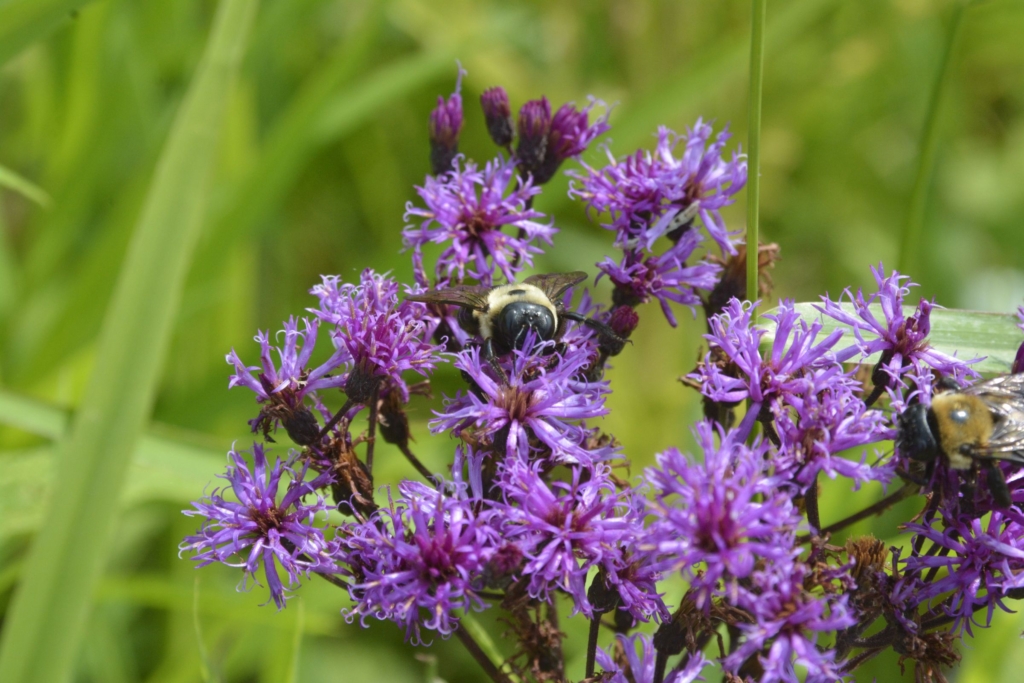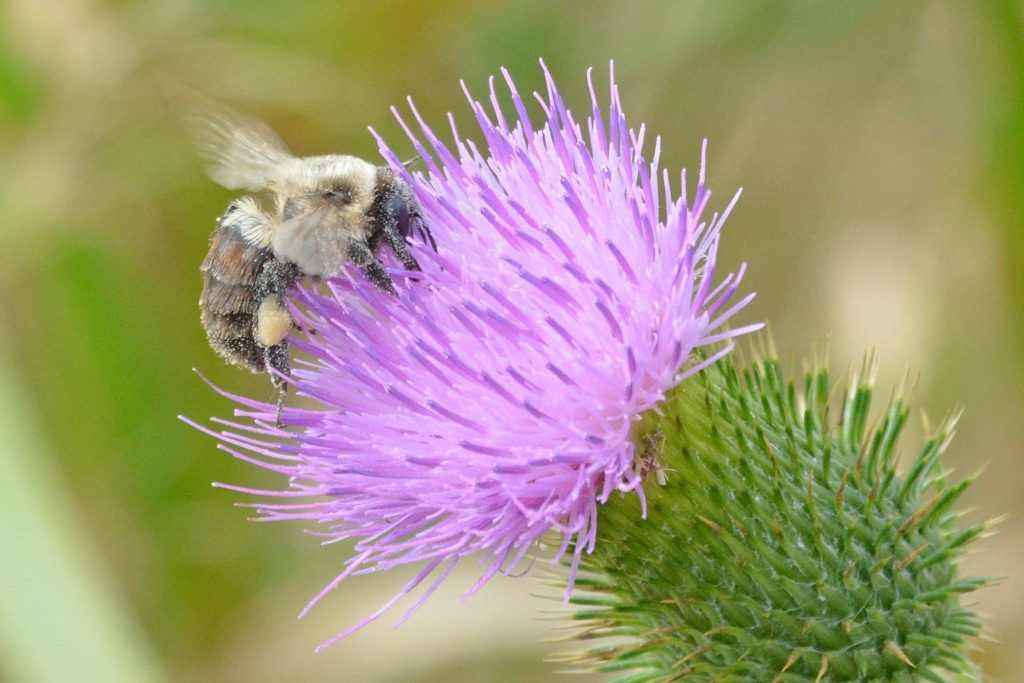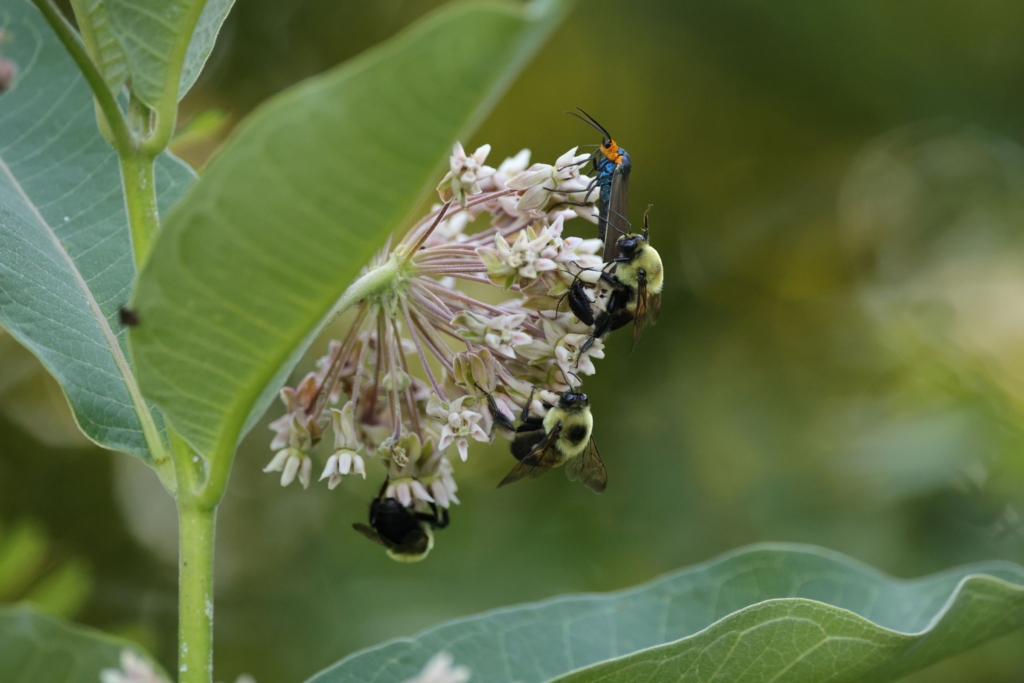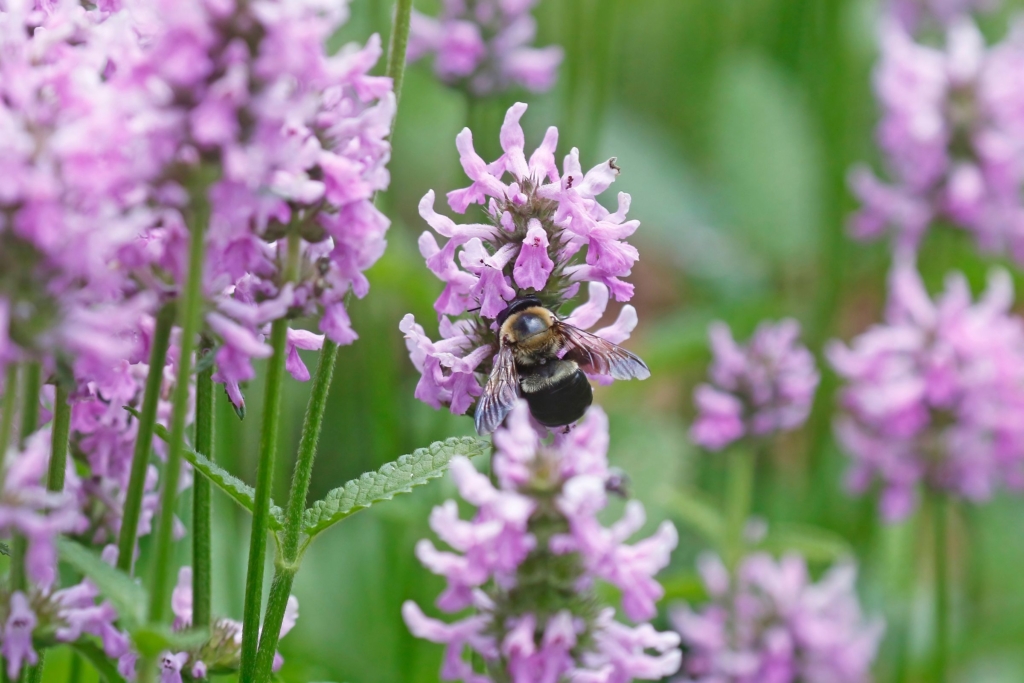You won’t bee-lieve how amazing our native bees are!
Enjoy these fun facts about some of nature’s hardest workers. Then, impress your friends and family with your new knowledge on your next adventure in your Metro Parks.

Bee fact #1
Summer’s still abuzz with plenty to enjoy! Bees fly through the end of summer into autumn as late bloomers, like ironweed and goldenrod, provide nectar and pollen. These high-value flowers are crucial for bees to finish their nests before the season ends.
Our native bees don’t make honey, so nectar and pollen are their only sources of food. Look for these fall flyers on native flowers this autumn at any Summit Metro Park!
Bee fact #2
Did you know Ohio has over 450 bee species? The drier an area is, the more diverse the bee species are. Ohio’s temperate and (usually) dry climate allows for this diversity, while states in the southwest have over 900 species!
A dry climate is important for bees because the majority of species are ground nesters, and female bees dig as deep as 10 feet to create a nest!

Bee fact #3
Bumble bees aren’t just cute and fuzzy; they’re some of nature’s hardest workers! Native bumble bees are seven times more effective at pollination than introduced honeybees. Bumble bees are also the brawn and brain of the bee world, due to their ability to muscle their way into flowers and special capability to buzz pollinate.
While the common eastern bumble bee (Bombus impatiens) is most common, there are a dozen other Ohio bumble bee species to discover.
Bee fact #4
Did you know most Ohio bees are solitary? Seventy percent of our native bees nest in the ground, while 30 percent nest in cavities. Only a few species, like bumble bees and some sweat bees, are eusocial, or contribute to a collective nest.
While most bees are solitary, not all live alone — some nest close to others in aggregations, like bee neighborhoods. Others are communal nesters, using the same nest entrance but keep to their own chambers, like a bee apartment building!

Bee fact #5
Did you know a baby bee’s food is called bee bread? To create this concoction, female bees work hard to collect pollen in their scopa, stiff hairs on the back of her legs or under her abdomen. Add a little bit of nectar and the bee bread is made! When a female bee lays an egg, she places the bread for the baby bee to eat when it hatches. Talk about baked with love!
Bee fact #6
Seeing red? Bees aren’t! Bee vision is shifted from humans’ — a bee can’t perceive the color red. Many red flowers are pollinated by birds or other insects; bees prefer white, yellow or blue blooms.
While they can’t see red, they see into the ultraviolet spectrum. To bees, many flowers light up in ways humans can’t see. Some of these cues are called nectar guides, which direct bees to the nectar’s location.

Want to learn more about bees, other pollinators and native wildlife? Come to an upcoming program!